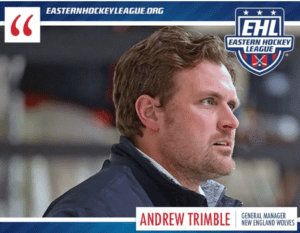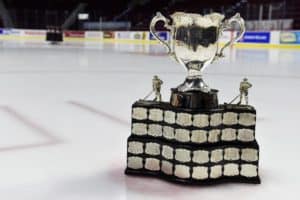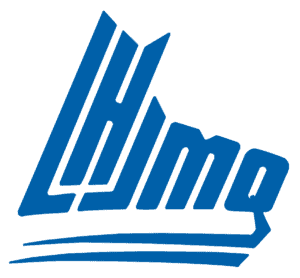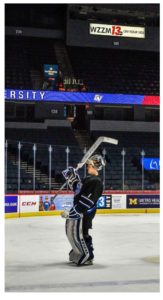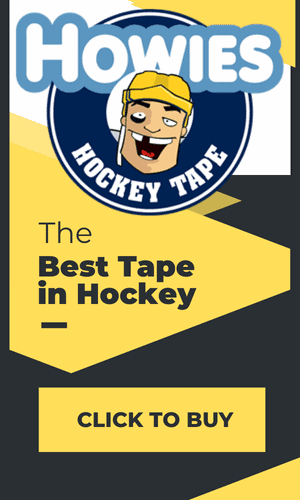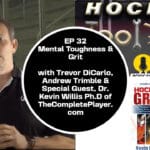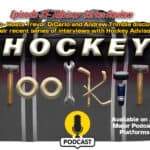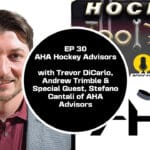5 Myths of Learning to Skate
By Andrew Trimble
I’ve had the opportunity to teach hundreds of beginners how to skate over my 20+ years of coaching. In different environments, different settings, and with different formats, I’ve had the fun chance, to be the first face a child gets to see when they are first undertaking the process of learning how to move themselves with thin steel blades on frozen water. Whether its introductory programs at the Ocean Ice Palace in Brick, NJ, Ice Hockey in Harlem, or the LTS program in Laconia, NH, learning to skate and teaching kids how to skate is an incredibly rewarding experience.
With this article I’ll debunk some of the common objections I hear from parents or players when undertaking introductory programs. I hope it informs you and gives you that little extra level of motivation to try skating for yourself, your son or your daughter.
MYTH #1- Skating is an Unnatural Skill
You hear this often from parents or adults describing why their athlete skates the way that they do, or why they never started the process of learning how to skate. These are the same types of people who probably told their cave dwelling ancestors that there was nothing better than inside that cave. No need to venture outside… we have everything we could ever want right here!!!
Skating may be a technically difficult activity, but it certainly is not unnatural. The motor skills of most 3 year old children can propel them on the ice with limited training and resources. In fact, the natural glide of ice, and improved technology has allowed most toddlers acquisition of this skill in a quicker time frame than learning to write their own name, or catch a baseball with a baseball glove.
In my years of coaching 2, 3, and 4 year olds, I have found that Implicit learning, learning of complex information in an incidental manner, without awareness of what has been learned, is the most effective way to hard wire these basic on ice motor skills. For example; the common problem of getting up once you have fallen onto the ice. Some coaches could prefer a detailed handout with the step by step process written out about how to properly stand up from a sitting down position. Other coaches could use training aids like blocks, chairs or supports to have the young skater stand on their own two feet. Implicit learning, takes a game like “Simon Says” and utilizes it on the ice with the instructor creating a fun game around the peer-learned process of standing up and sitting down.
Implicit learning also changes the dynamic of being taught something (explicit coaching) to learning something (implicit coaching), and creates an atmosphere of less talk and more doing. Activity levels increase and generally people have more fun through the process of self discovery.
In Daniel Kahneman’s best selling book, “ Thinking, Fast and Slow”, he describes this process.
Mood evidently affects the operation of System 1: when we are uncomfortable and unhappy, we lose touch with our intuition.
These findings add to the growing evidence that good mood, intuition, creativity, gullibility, and increased reliance on System 1 form a cluster. At the other pole, sadness, vigilance, suspicion, an analytic approach, and increased effort also go together. A happy mood loosens the control of System 2 over performance: when in a good mood, people become more intuitive and more creative.
Create a fun environment through implicit learning at your Learn to Skate program or when teaching your son or daughter how to skate and you will see amazing results in a short time. There will be time for the technical improvements and corrections, but first they have to learn on their own (through the environment that you create) how to stand before they can skate.
MYTH #2 The longer the better
The average 8-12 year old child spends 4 hours or more a day watching screen media each day. That goes up to 7 hours per day when they are a teenager. https://www.washingtonpost.com/technology/2019/10/29/survey-average-time-young-people-spend-watching-videos-mostly-youtube-has-doubled-since/
Studies have shown that advertisers or content creators only have 8 seconds before that child makes a decision to watch the video or pick a new one.
Eden Prairie, MN is a town 12 miles southwest of Minneapolis, and home to roughly 60,000 people. It has produced, along with many of the immediate surrounding towns, an NHL lineups worth of Professional and Division 1 NCAA players. In a town of 60,000 people Eden Prairie Youth Hockey has 12 rostered Mite teams, 4 squirt teams, 4 pee wee, 3 Bantam, and more teams at the Midget, High School and Jr levels… while also having 8 separate girls teams.
Several years ago I spent a week on a recruiting trip with Ken Eddy. Ken was coaching in Sweden at the time, but previously ran the Eden Prairie Youth Hockey Association including coaching their Learn to Skate and Learn to Play. One of the keys to the Eden Prairie success he noted was limiting the amount of practice time for younger levels. In fact, he said he only allowed 30 minutes for learn to skate practice sessions. Why?
Chunking is the technique of organizing or combining individual pieces of information into “chunks.” This facilitates easy retrieval of the information as students have to memorize the chunks instead of the individual information. These chunks also act as cues, allowing for easy recollection of information. https://k12teacherstaffdevelopment.com/tlb/how-can-i-use-chunking-as-an-effective-memory-strategy-in-the-classroom/#:~:text=Chunking%20is%20the%20technique%20of,for%20easy%20recollection%20of%20information.
If a high school team of 14-18 year olds is doing a practice session for 1 hour, why in the world would you use the same time frame for a 3-7 year old? The truth is you shouldn’t. Memorizing, recollection and fatigue are huge obstacles for successful learning. Shorten up the practice time for beginners, and make them excited to come back to each session each time. I guarantee they will group the skills and learn them more effectively and have a greater appreciation for the time spent.
MYTH #3 The Skates hurt your Feet
New skates can be the worst. Blisters. Sores. Lace bite. Muscle cramping…
Even with great new technology that allows for quicker break in of skates, adapting to your new footwear can be a real problem.
One of the greatest skaters of all time, Paul Coffey, was renowned for his skate choice. Not just the unique way he laced them, but the sizing. As Hall of Fame NHL defenseman Paul Coffey had size 9 feet, but wore size 6 ¾ skates.
I was passionate. I found something that I loved. I could be all alone in a big old skating rink and nobody could get near me and I didn’t have to talk to anybody because of my shyness. It was great. I was in my fantasy world.” – Dorothy Hamill
Every parent knows, skates are not cheap. They are the most expensive part of a skater’s equipment, but also the most critical, and kids grow like weeds between the ages of 5-17. Oftentimes, parents will buy skates two sizes too big in order to hope to get two seasons out of their new pair. Moreover, every kid’s feet are different… from wide and flat, to long and skinny. It is certainly a challenge.
Yet, I cannot stress to parents enough the importance of purchasing a pair that fits properly. Poor skating habits, poor technical and a general lack of fun are often the byproduct of a poorly fitting boot. Check out second hand stores or older siblings for a pair that is the right fit, rather than the more expensive new pair that fits poorly. Your child will have much more success with a proper fit.
Skates should feel like they are part of your foot, not a boot that hovers around your foot. Lace them tight for stability, dry them out after use so the rivets stay in good condition, and check the size often as your child grows. Skates that hurt your child’s feet or hinder their ability to skate can be the greatest single obstacle that an athlete has to overcome in order to fall in love with skating.
MYTH #4 – Its not in his or her Genes
Brian was a pitcher at Loyola Marymount in Los Angeles and hoped Auston would head down the same basepath as he and his father. Auston’s nickname is “Papi,” after David Ortiz of the Boston Red Sox, his favourite baseball player growing up and the inspiration for wearing No. 34. Even though his father thought he was better at baseball, the sport was too slow for Auston and he chose to focus on hockey.
“ It’s kind of different because usually in hockey it’s dad who takes you to the pond, but it’s a little different coming from Arizona. My dad (Brian) played baseball in college. I did enjoy baseball, and it was certainly something I liked to play, but hockey would become my No. 1 passion.”
Football also ran in the family; Auston’s great-grandfather coached at Muskogee Central High School in Oklahoma and his uncle, Wes, played four games at wide receiver for the Miami Dolphins after getting a deferment from the Vietnam War to join the team.
7 Cool Things About Auston Matthews
USA Hockey implemented the ADM model over 10 years ago specifically for “Long Term Athletic Development”, and created a template for organizations to use when training their players for success in the game of hockey. It wasn’t regionalized and it was specific to a type of kid. It’s a nationwide, broad based organizational approach that attempts to create a roadmap for success.
ADM and the nationwide growth of skating and the game of hockey was specifically designed for young players such as the above quoted Auston Matthews. Matthews enhanced his skills as a young man in a very unconventional environment, the state of Arizona.
He learned the game at now-shuttered Ozzie Ice, a facility that was the showcase of oil magnate Dwayne Osadchuk’s new synthetic ice technology. The two rinks weren’t much bigger than the proverbial phone booth he can now stickhandle in, and all games were three-on-three. The non-traditional apprenticeship didn’t hinder his growth.
7 Cool Things About Auston Matthews
With proper training and the right environment, players of any race, ethnicity, gender, creed or color can skate and attain success in hockey. Athletes are hockey players and hockey players are athletes. The same goes for attaining the ability to skate. Develop the athletic skills and build the passion in a player and anyone can be successful.
MYTH #5 Its Too Expensive
The sport of ice hockey is at or near the top of any chart that ranks youth sports by their costs and expenses. That much is true.
That rate varies from sport to sport, with different expenses taking up the bulk of the cost. Equipment was the biggest expense for skiing and snowboarding, while in most others it was travel. Ice hockey parents paid the most overall — $2,583 a year on average. They also paid the most right out of the gate, with $634 in average registration fees.
https://money.com/youth-sports-cost/
In the above cited article the Top 10 ranking included sports such as Lacrosse, Bicycling, Field Hockey, Tennis, and swimming, all sports which may or may not have a facility rental fee. Additionally, Ice Hockey players are covered head to toe in necessary equipment for their athletes. These details beg the follow up question… how often are your players using the facility, and how much is the equipment costing you?
Hockey generally has a long season, from September to March of a given year. Roughly a 28 week season. If your team practices twice a week and has two games a weekend that would mean that your athlete is travelling to the rink an average of 112 times a season. Not including equipment, team apparel or uniforms, that would equate to $23 dollars per on ice session per season. Compared to other sports and activities such as Dance Schools or Horseback Riding, Hockey offers a tremendous value per session.
Additionally, parents have the opportunity to choose how much they want to spend on equipment. Hand me downs from older siblings, equipment swaps, used or refurbished equipment all represent great ways for parents to save without sacrificing safety.
Check out these great websites for deals on Hockey Equipment-
Sideline Swap where you Buy and Sell used gear- https://sidelineswap.com/shop/hockey/l30
ProStock Hockey Gear, where you can overflow stock of team hockey gear- https://www.prostockhockey.com/
Hockey Monkey. Make sure to check out the Clearance section- https://www.hockeymonkey.com/
Andrew Trimble is the General Manager and Co- Owner of the New England Wolves Hockey Club. He is also the Owner of Scoring Concepts LLC, a New Hampshire based hockey training company that offers camps, clinics, private lessons and teams. He has coached at all levels from Learn to Skate to College Hockey. For more info on his teams and programs check out- www.scoringconcepts.com or www.ne-wolveshockey.com

